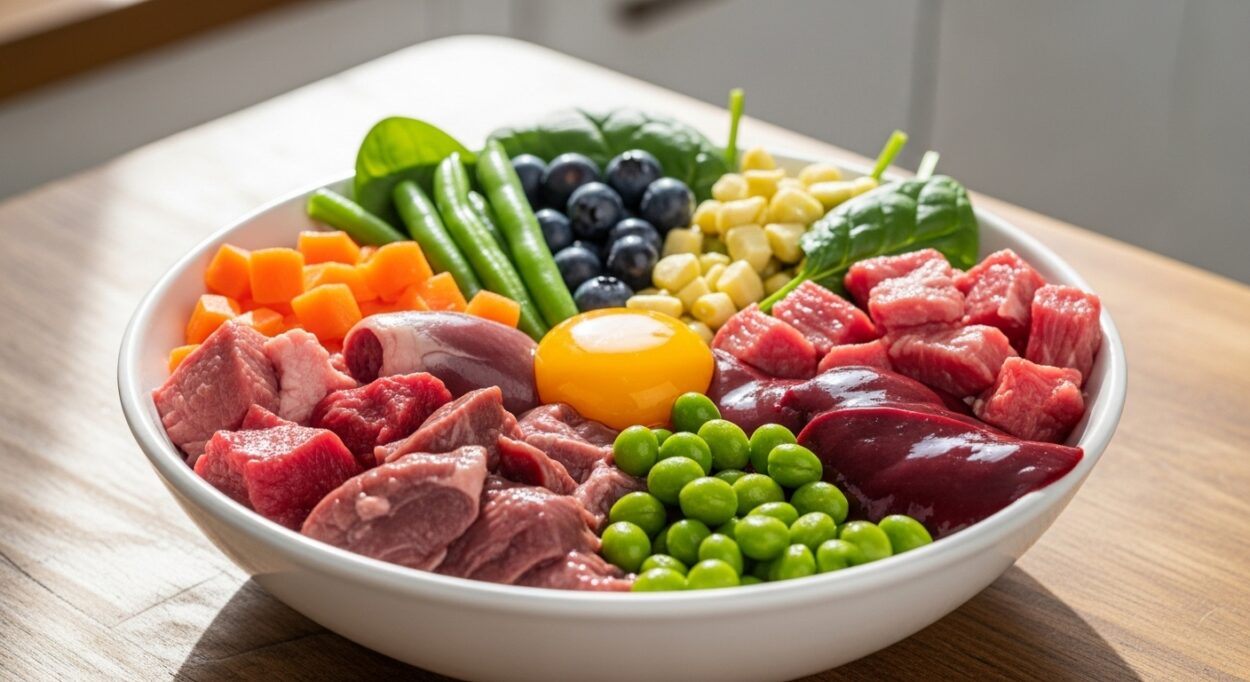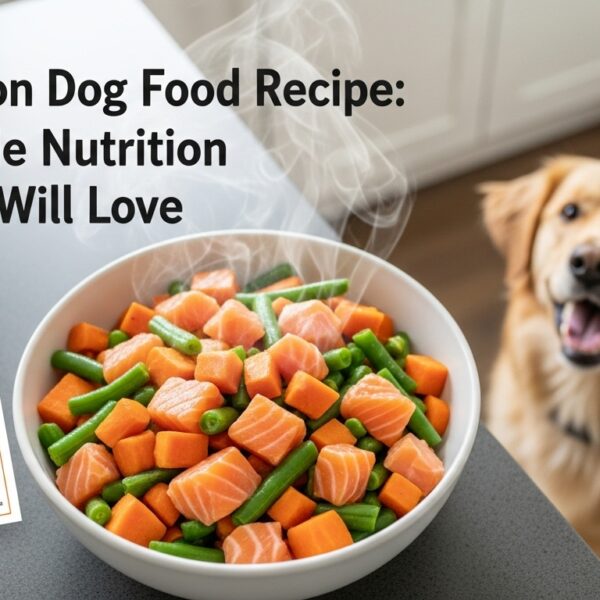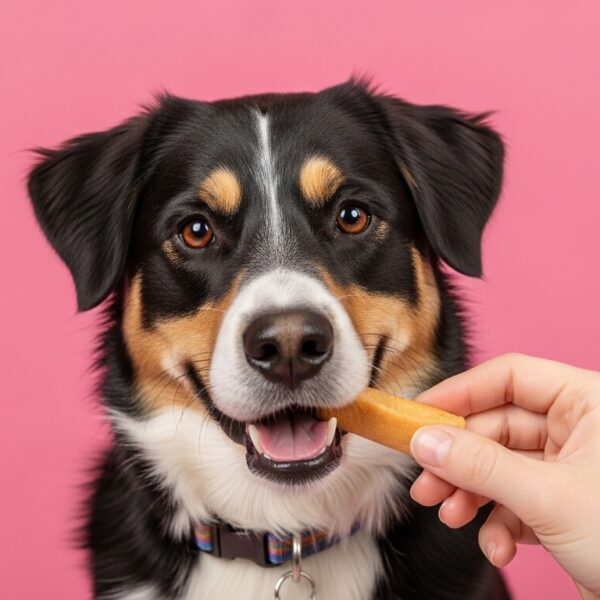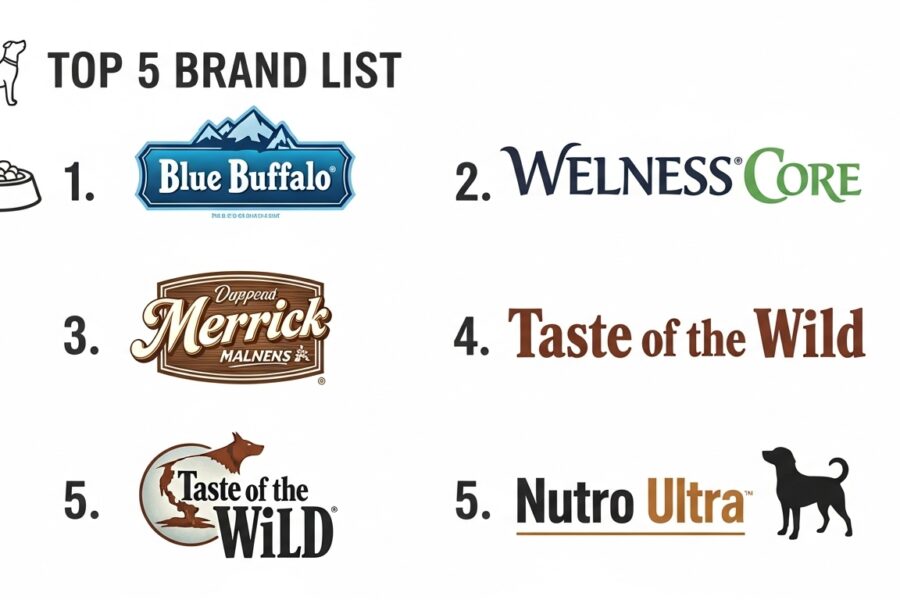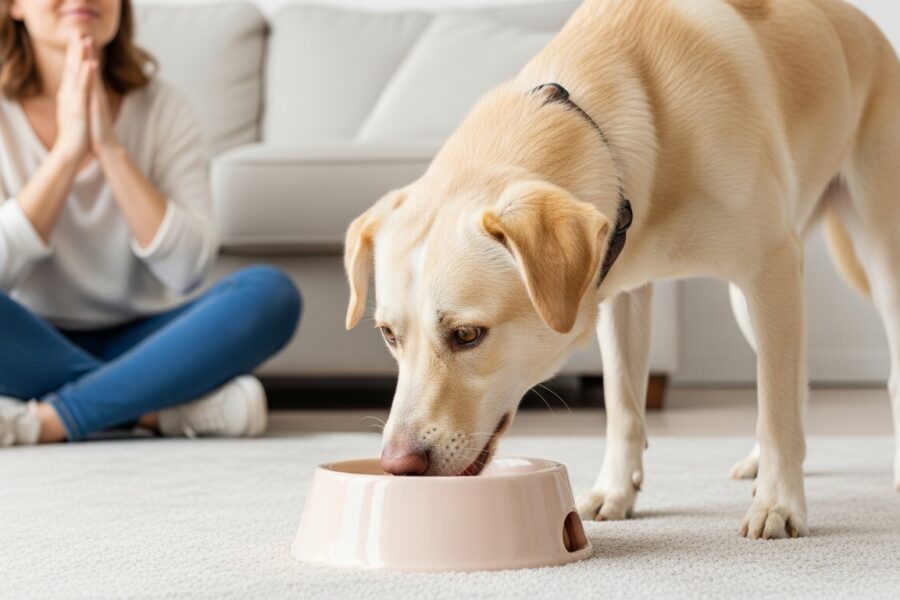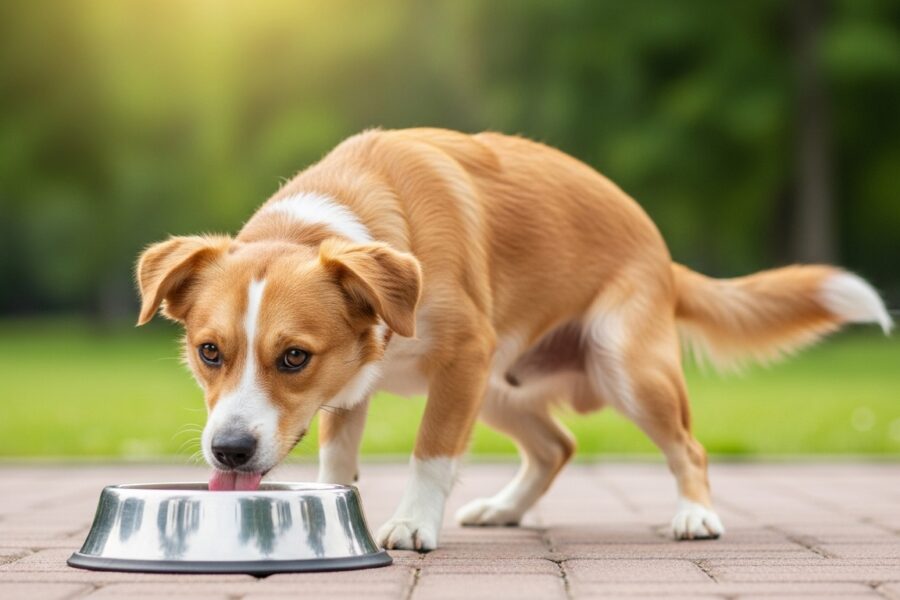Table of Contents
Introduction
Thinking about switching your pup to a raw diet, or just want to upgrade their current meals with more natural ingredients? You’re certainly not alone. In recent years, the popularity of raw dog food recipes has exploded as more pet owners aim to provide the healthiest diet possible. But how do you make sure your dog’s raw meal is not only tasty, but also complete and safe?
Let’s walk through the essentials: what a balanced raw diet looks like, easy recipes you can try at home, vet-approved ingredient choices, and how to keep your pup (and your kitchen!) out of harm’s way.
Why Choose Raw Dog Food?
Some benefits dog owners report with raw feeding:
- Shiny coats and healthy skin
- Increased energy and vitality
- Improved digestion and smaller, firmer poops
- Cleaner teeth and fresher breath
However, raw diets aren’t for every dog or human household. Raw feeding takes knowledge, preparation, and strict hygiene. Consult your vet first, especially for puppies, older dogs, or pets with existing health concerns!
What Makes a Raw Dog Food Recipe “Balanced”?
According to veterinarians and canine nutritionists, a raw meal for most adult dogs should generally include:
- Muscle meat (lean beef, chicken, turkey, lamb, duck, etc.)
- Edible bone (for calcium and minerals; think crushed chicken wings/necks, not weight-bearing bones)
- Organ meat (liver is a must, plus kidney, spleen, heart)
- Vegetables (like spinach, carrots, broccoli—pureed for digestibility)
- Small amount of fruit (blueberries, apples—no grapes or raisins!)
- Supplements as recommended (fish oil, vitamin E, or a canine multivitamin for balance)
A typical starting ratio:70% muscle meat, 10% edible bone, 10% organ (half of that liver), 10% veggies/fruit.
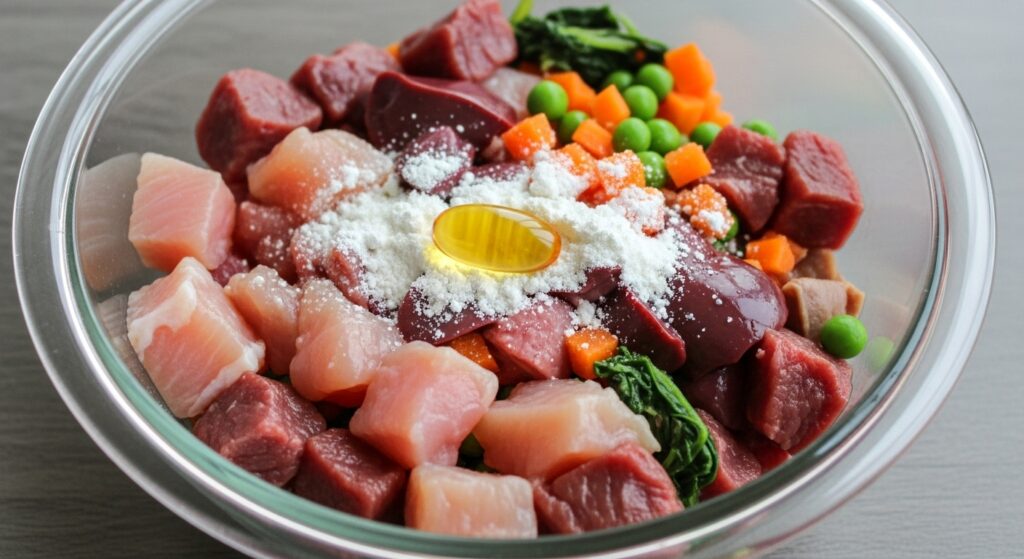
Simple, Vet-Approved Raw Dog Food Recipe
Portion Size: The amount will depend on your dog’s weight, age, and activity. For most adult dogs: aim for 2-3% of body weight daily, divided into two meals.
Ingredients (for 15kg/33lb adult dog; adjust portions for your pup):
- 280g (10 oz) raw lean chicken thighs (no skin)
- 40g (1.5 oz) raw chicken necks or wings (ground, for bone)
- 40g (1.5 oz) beef or chicken liver (raw)
- 40g (1.5 oz) beef heart or kidney (raw)
- 30g (1 oz) finely chopped spinach or kale (lightly steamed or pureed)
- 10g (0.3 oz) shredded carrot
- 1 tsp salmon oil (or fish oil capsule, pierced and squeezed over meal)
- Optional: Tiny pinch of kelp powder, canine multivitamin
Instructions:
- Wash your hands and all surfaces thoroughly.
- Chop meats and organs into bite-sized pieces.
- Combine everything in a large bowl (or pulse veggies in a food processor first).
- Mix together, adding salmon oil and supplements last.
- Serve immediately, or portion into airtight containers and freeze—thaw before serving.
Tip: Always consult your vet or a pet nutritionist to adjust portions and ensure your pup’s specific health needs are met!
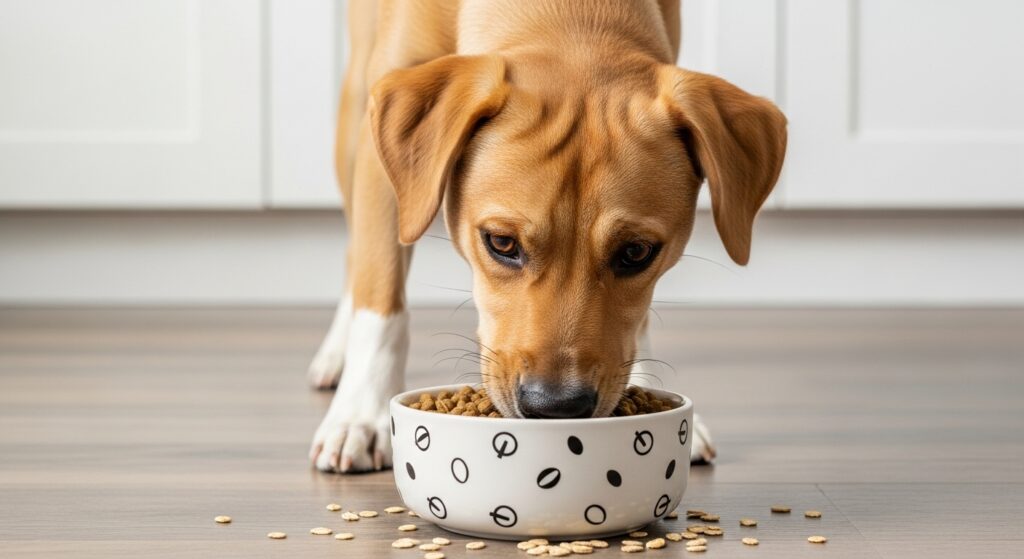
Extra Tips for Safe, Healthy Raw Feeding
- Buy meats from reputable stores; never feed spoiled or questionable meat.
- Wash hands and all kitchen items after each prep.
- Do NOT cook bones for raw meals (they become brittle—dangerous for dogs!).
- Avoid onions, garlic, grapes, raisins, avocado, and other food toxins.
- Freeze raw meals for at least 48 hours to help reduce bacterial risk.
- Introduce raw food gradually over 7–10 days to avoid tummy upset.
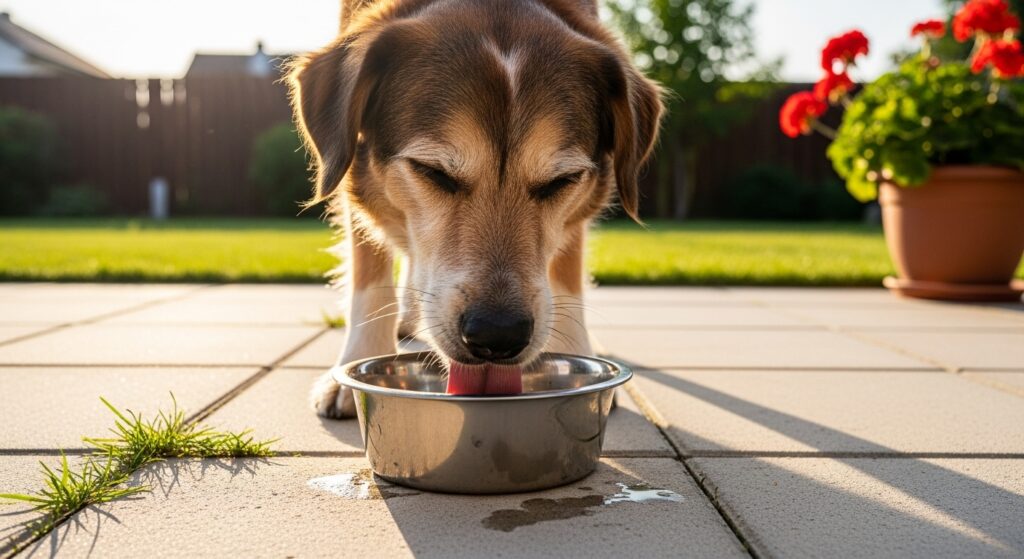
FAQs: Raw Dog Food Recipes & Feeding
Q1: Do all vets recommend raw diets for dogs?A: No, opinions vary! Some vets support balanced raw diets, while others worry about bacteria or nutritional gaps. Always check with your vet and consider your dog’s individual needs.
Q2: Can I use raw beef or fish instead of chicken?A: Yes—mixing up proteins keeps things interesting and helps cover all essential amino acids. Be sure to follow the bone/organ/veggie ratios.
Q3: Are supplements really needed?A: Often, yes—especially for nutrients like omega-3s, vitamin E, and calcium if you’re not feeding enough edible bone. Your vet can recommend the safest, most effective supplements.
Q4: How do I store raw dog food?A: Portion out and refrigerate for up to 2 days (in airtight containers) or freeze portions for up to 2–3 months.
Q5: Can puppies eat raw food?A: Yes, BUT their nutrient needs are stricter. Consult a vet for a puppy-specific, fully balanced recipe—don’t guess at the ratios.
Q6: What are some signs my dog isn’t tolerating their new raw diet?A: Vomiting, diarrhea, itching, excessive licking, lethargy or refusal to eat. If you notice these, switch back to the old food and call your vet.
Final Thoughts
Ready to give raw feeding a try? With the right balance, safe ingredients, and good hygiene, raw dog food recipes can provide a happy, healthy alternative to commercial kibble. Just remember—consult your vet, do your research, and introduce changes slowly for the best results.

